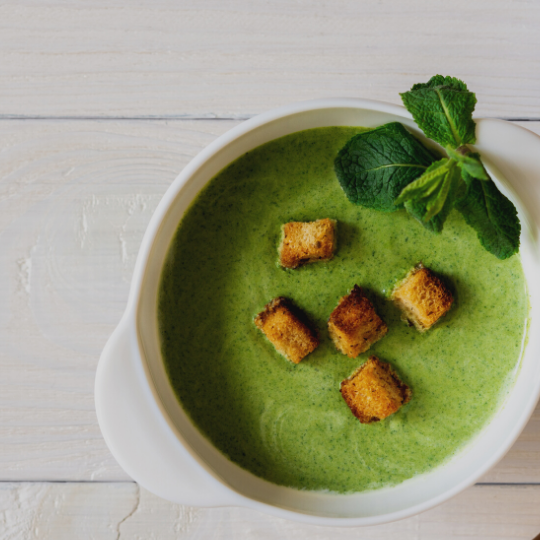Peas, Please! A New Look At An Old Food
Peas.
We either love them or hate them. Personally, I love them, and there is really nothing like the taste of peas plucked straight off the vine. I have fond memories of shelling peas with the family while sitting under the shade of Grandma’s crabapple tree. There is enjoyment in simple tasks and good company.
Peas sweetness comes from the natural sugars that begin to break down into starches the moment you pick them. We treasure them in the spring as one of our early crops, and one of our last autumn crops. That’s right - with planning you can resow peas in summer and harvest until the early frost. They are one of the easiest seeds to harvest and store for your own planting next year.
Beautiful, bright, easy to digest peas! Even their blossoms and sprouts are edible.
Are peas a vegetable or legume?
Both. Peas are eaten both dried and fresh (green). Native to India, there are more than 50 varieties of peas and much of the world, especially the Middle East and Asia, eat peas in both their dry and fresh form. Americans, however, tend to favor fresh peas leaving out the rich treasure that dried peas can offer. Peas’ nutrition and energetics will change a little depending on whether you eat them dry or fresh, but these little legumes make an wonderful addition to any diet.
Western nutritional highlights of peas
Peas are an excellent source of protein, vitamins A and B and minerals including calcium, sulfur, potassium and iron. Dried peas are a great source of fiber. Green peas (fresh or frozen) have vitamin C, K and carotenes, that are lost in the dried form. Like other legumes and lentils, peas lower cholesterol, especially in their dried form where they are most able to absorb excess and dampness (one of the ways Asian medicine categorizes cholesterol).
Eastern energetics of peas
Peas have a neutral temperature and very sweet flavor. They enter the Spleen/pancreas, and relax the Stomach and Heart. Peas help to calm down the Liver when it is overly hot or toxic – which is often for many Americans, especially in the spring. Peas reduce ‘rebellious Qi’, a condition when the Qi is moving the opposite direction that it should. For example, Stomach Qi should descend, sending partly refined food down to the Small Intestines. When this Qi rebels and rises rather than descends you may suffer from acid reflux, GERD, hiccups, belching, or coughing when eating. Peas also have a mild laxative and draining (diuretic) effect, making them beneficial in constipation and gout conditions.
Dry peas have a drying nature and may need to be avoided in conditions where the body is very dry and thin. This overly drying nature is countered or reduced by the addition of olive or another oil. Overall, all beans and legumes help us adapt and become tolerant to life changes and challenges.
Sustainability
In a world where we are facing major concerns of food security and sustainability peas and other lentils and legumes are rock stars. The require few resources to grow, store easily, and produce high yield nutrition without heavy environmental damage when they are managed correctly.
A tip on growing
Want to have fresh peas all season long? Not a problem, but you will have to step away from the commercial varieties that have been raised to have a singular harvest time. Plant ‘first earlies’ like Feltham First in late autumn for a spring harvest. In late summer, plant varieties such as Onward and Alderman for main crop harvest. Check with your local organic nursery for heirloom varieties and their planting and harvest time.
Using peas fresh
Bright, simple and satisfying.
Eat both shelling and pod varieties straight from the vines. Use peas to liven up green salads, or toss them in a stir fry, soups of any flavor, or add them to a simple grain salads with a light vinaigrette. My daughter, Clara, went to college in Dublin, Ireland and was introduced to mushy peas, which are now appear in our diet too. Honest and simple, it’s easy to get addicted too them and you can add their flavor based on your preference. Peas are wonderful plain as a simple snack and split pods and stuff them with an herbed goat cheese for a summer picnic.
Frozen peas
Undoubtedly the most common way peas are used. They cook up quickly in a matter of 3 or 4 minutes and can be added to soups, stews, asta dishes, made into pate’s and our favorite mushy peas.
Using peas dried
Dried peas are used widely in Indian and Middle Eastern cuisine. Dried foods tend to have a drying effect on the body. They sop up wet, sagging and damp conditions like excess phlegm, mucus, chronic fatigue, diabetes and high cholesterol. Because they can be so drying, they are often used in dishes with oil or to help counter oil meat dishes, like lamb.
Dry peas do not require soaking (but do wash and rinse them) and cook up quickly. Use them in recipes that would call for lentils like grain dishes or soups–think of masalas. Snack on dried plain or herbed dried peas–great for hikes. You can also sprout peas. As a general rule, sprouts contain all the energetic and nutrient potential of the plant activated all at once and readily available for digestion–yum!
Peas and rice–completing the protein
Lentils and legumes are excellent protein sources and a wonderful way to reduce your animal protein intake. However, there is a bit of a problem–they lack all the amino acids, making them an incomplete protein. By combining beans or lentils with a particular grain, the problem is solved. In the case of peas, use them with whole grain rice (not Uncle Ben’s) and your amino acid profile is complete. Find out more about protein pairings of lentils/legumes and whole grains in Protein Pairs.
Making dried peas more digestible
Of all the beans, peas are among some of the easiest to digest. If they are new to your diet sometimes people may encounter difficulties in digesting them. Try using herbs like fennel, mint or oregano or curry spice to aid in digestion. Also consider side dishes of fermented foods like kimchi or sauerkraut. Use kombu or kelp when cooking them to aid their absorption. Chew thoroughly and consider using charcoal tablets and digestive teas until your body get used to digesting them.
Eat well!
April







